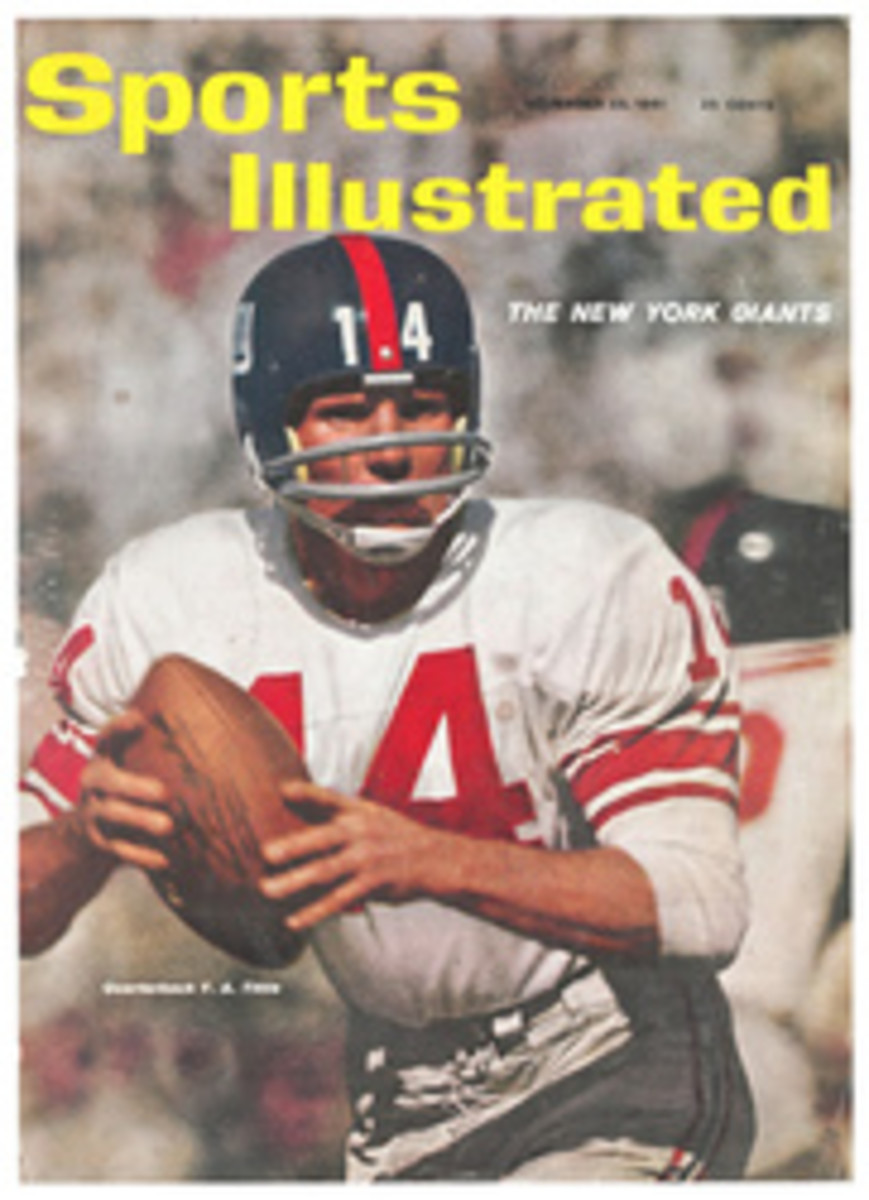
Improved skis, lightweight poles and rugged boots will give this year's skiers better control
The precise balance and control today's skiers must have to master the subtle techniques of the shortswing lead to a need for more effective ski equipment. For instance, the recreational skier requires light ski poles that are durable, and this year they are available in such materials as fiber glass and lightweight aluminum. Both ski boots and safety bindings have innovations that make them safer and more practical. And of all the new metal, wood and plastic skis now imported from Europe, the most futuristic design, by far, is the air-chamber construction of the Jean Vuarnet glass ski. "We think it the best slalom ski yet," said Emile Allais, France's 1937 world champion. Fifty pairs of the Vuarnet skis will be made for the French ski team, and an estimated 4,000 pairs will be turned out for recreational skiers.
BOOTS BUILT FOR COMFORT AND CONTROL
THE HINGED BOOT
The Koflach Gold Star boot has stainless steel hinges that allow the boot tops to flex forward with the skier's leg action (left). This may help prevent the ankle soreness that sometimes occurs with other high stiff boots. Despite this flexibility, the Koflach boot ($80) provides the skier with the lateral support necessary for tight turns.
A BOOT FOR GIRLS
This ski boot was designed by Penny Pitou, the top U.S. skier in the 1960 Olympics, especially for girl skiers. Called the Squaw Valley boot, it has a narrow ankle opening and is light and small but solid enough for controlled skiing. It is made by Koflach ($40).
FOREIGN-MADE SKIS
ALUMINUM AND WOOD
Slightly stiffer this year for better performance on packed snow, the Attenhofer A-15, an aluminum-and-wood sandwich ski, is one of the European competitors of metal skis turned out by American manufacturers such as Head and Hart. Made in four different models (racing and recreational), each pair of A-15 skis has plastic bottoms and is guaranteed for three years against factory defects ($110 to $130).
METAL DOWNHILL
The Blizzard Metall is also an aluminum-and-wood sandwich ski, but unlike the Attenhofer A-15, it utilizes a vertical core of alternating plastic and wood to produce the extra-stiff characteristics of a downhill ski. Used successfully in downhill racing last winter in Austria, the Blizzard Metall ($140) has two layers of aluminum on the bottom as well as an aluminum layer on the top. One-piece steel edges lie flush with the Kofix plastic bottom sole. A recreational model is also available ($140).
ALUMINUM
The Couttet ski, this season's new Aluflex model, has an aluminum ridge top and bottom with a solid wood filler. The Couttet ($100) also has a plastic tape on the ridge top that gives the ski a glossy, enamel-like appearance. Like the plastic bottom sole, it strips off easily and is simple to replace. Too, the, steel edges, riveted in sections, are easier to replace than the one-piece edges found in some of the other imported skis. There is a separate boot-binding platform with rubber support cushions.
FIBER GLASS
One of the most promising European skis this year (it won several summer slalom races in France last July) is the Jean Vuarnet fiber glass ski made by Rossignol ($150). It is molded around three air chambers and two wooden ribs, and the flexibility of the ski can be controlled by varying the pressure of the air chambers. The air chambers also reduce the overall weight of the ski.
FUNCTIONAL SKI POLES
Recreational skiers, in order to use effectively the longer ski poles required in today's shortswing skiing, must have poles that are lighter and stronger than ever before. And most importantly, the poles should still incorporate the proper swing-weight balance for quick and easy handling. A skier also requires a solid grip on the handle of the longer ski poles, so he can place them precisely as pivot points in a tight series of turns. At the Squaw Valley Olympics a long, light aluminum pole made by Scott of Sun Valley was offered to some of the racers on a trial basis. Within days there was hardly a skier in the Valley who was not begging Scott for a pair of his own, and last year a mass-produced version of the Scott pole was almost as popular with recreational skiers. This year a new Scott pole is on the market that is fitted with a functional handle (below) that helps skiers to flick their poles out quickly and easily.
CANTED PISTOL GRIP
The Scott ski pole handle provides skiers with a more secure and comfortable grip. In addition, the handle is tilted a few degrees forward from the ski pole shaft. This canted handle enables skiers to plant their ski poles slightly ahead, without half-opening the hand or placing the wrist in an awkward position.
SAFETY SKI POLE
The Sila-Flex fiber glass ski pole has a wrist strap that releases under tension (above) and a rimless plastic basket (below). Both features are major design innovations in ski poles. The wrist strap can be cinched down for close, tight control of the pole, yet it still will release under tension (the amount of tension desired is regulated by a handle-adjustment screw). The rimless basket also pulls apart under severe pressure, such as catching a pole in a snow fence or bush. The Magnum model, which is extremely lightweight and strong, is made of stressed fiber glass ($24.50).
EASY TO ADJUST
Safety bindings (whether front-throw, toe or turntable) must provide automatic release in case of spills, yet still hold the boot securely and firmly while skiing. Such bindings should not lock or freeze up, must be easy to adjust or reset on the ski slope and, ideally, should not require separate boot attachments.
CLOCK-SET BINDING
The Geze-Olymp safety binding can be hand-set (clockwise) to any of 11 degrees of tension but never locked. The side toe holders prevent the ski boot from rocking on the ski and also raise or lower with a turn of an inset screw to accommodate any boot sole. And the swiveling mechanism will not freeze. The toe pieces ($10) are guaranteed by the manufacturer for three years.
BOLT-SET BINDING
The Kandahar front-throw binding permits skiers to increase or decrease tension on the cable of a binding by as much as three inches (above). The adjustment differential of this otherwise conventional assembly can be loosened or tightened by twisting the forward steel bolt ($11).
PHOTO
BEV ANDERSON DOES SHORTSWING TURN
ELEVEN ILLUSTRATIONS
DAN TODD

